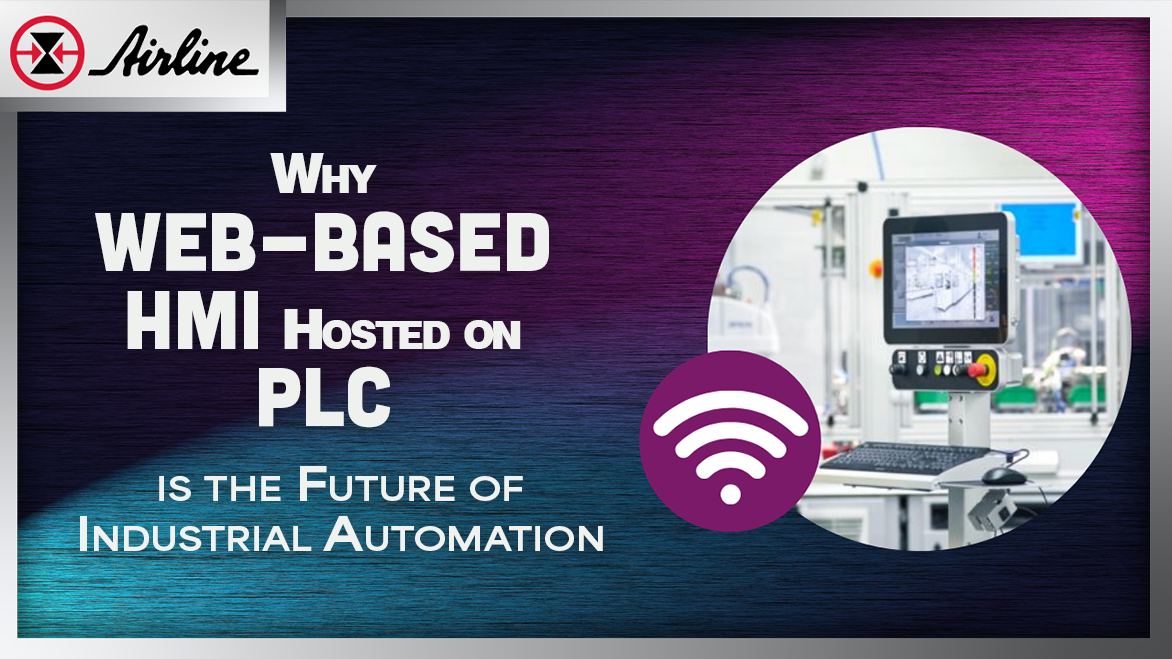In today's Industry 4.0 world, even our everyday technologies are quietly transforming. For example, the once traditional Human Machine Interfaces, or HMIs, are becoming increasingly powerful and user-friendly; this change introduces web-based HMIs hosted on Programmable Logic Controllers or PLCs.
This raises an important question: As technology continuously transforms and redefines industries, are you ready to capitalize on new opportunities? More importantly, are you ready to handle new challenges? In today's blog post, I'll review why I think web-based HMI hosted on PLC is the future of industrial automation and can enhance the cost and efficiency of your projects.
Skip to a Section
Introduction to Web-Based HMI | Key Advantages of Web-Based HMI | Successful Application Example
Choosing the Right HMI | RealPars' PLCnext eHMI Training | Support and Shop | Additional Resources
Introduction to Web-Based HMI
.png?width=257&height=257&name=Copy%20of%20Black%20Animated%20Happy%20Monday%20Instagram%20Post%20(2).png)
Before we dive into the benefits, let's clarify what a web-based HMI is. Unlike traditional touch panels that rely on proprietary software, web-based HMIs run on HTML5 browsers. HTML5 browsers are universally available on many devices, making them an accessible option for HMI control from anywhere. Plus, web-based HMIs run on open-source operating systems and can integrate with other automation software seamlessly. As a result, web-based HMIs provide more flexibility and accessibility compared to traditional HMIs. To learn more about HMIs, how they work, and their types, benefits, and future advancements, read our blog post, Human Machine Interface (HMI): The Ultimate Guide for Industrial Manufacturing Success.
Key Advantages of Web-Based HMI
1. Cost-Effectiveness
Traditional HMIs often come with hefty software licenses that can strain budgets. Web panels, on the other hand, eliminate the need for expensive proprietary software. They leverage open standards like HTML5, allowing businesses to cut costs significantly while maintaining high functionality.
2. Flexibility and Universal Compatibility
Web-based HMIs are not tied to a single manufacturer - meaning they can operate on different devices, including Android tablets, laptops, or smartphones. This allows for universal compatibility. This flexibility lets engineers and operators choose hardware based on their specific needs and preferences rather than being locked into a single vendor’s ecosystem.
3. Remote Access
No more coming in on the weekends to monitor and control machinery. With web-based HMIs, real-time data access and control are possible from anywhere in the world. This remote accessibility is especially beneficial for industries like water treatment facilities, where continuous monitoring is absolutely critical.
4. Ease of Replacement and Troubleshooting
In traditional touch panel setups, replacing a faulty HMI can be time-consuming, requiring software downloads and configurations. Web-based HMIs simplify this process. Since the interface runs on a server hosted by the PLC, swapping out hardware is a matter of plugging in a new device and entering the IP address to connect to the network—no software installation is required.
5. Integration with Industry 4.0 and Smart Manufacturing
Modern manufacturing relies heavily on data-driven insights. Web-based HMIs seamlessly integrate with industry-standard communication protocols, facilitating easier data extraction and analysis. This integration is crucial for businesses aiming to leverage IoT and smart manufacturing practices to enhance operational efficiency.
Successful Application Example: Modernizing a 30-Year-Old Heating System
Through reverse engineering and innovation, our partners at Firefly Technologies transformed a 30-plus-year-old manual heating system into a fully automated induction heating setup using Phoenix Contact’s PLCNext, an innovative automation platform that combines traditional PLC functionality with modern, open technology.
The results? Double the production speed and reduced scrap, pushing efficiency and performance to new heights! Check it out.
Choosing the Right HMI for Your Projects
While web-based HMIs offer many advantages, the goal is to choose the best HMI for your projects. Here are some key things to consider when deciding between traditional HMI’s and web-based HMIs.
1. Dependence on Network Reliability
Web-based HMIs rely on robust network connectivity, which can be a double-edged sword. In environments where internet connectivity is intermittent or unstable, the functionality of a web-based HMI could be compromised. In such cases, a traditional HMI may prove more reliable for essential operations.
2. Cybersecurity Concerns
Web-based HMIs are open, which makes them vulnerable to cybersecurity threats. As connectivity increases, there's a risk of unauthorized access to important data and systems. So, industries with stringent security regulations, such as pharmaceuticals or critical infrastructure, may prefer the more contained environment offered by traditional HMIs for the time being. At Airline, we recommend using the Phoenix Contact mGuard; learn how to establish and secure a remote network with this safety solution in our blog post.
3. Specific Use Cases
![]() Ultimately, while web-based HMIs present an exciting future for industrial automation, companies should carefully evaluate their specific operational requirements, existing infrastructure, and long-term goals before making a transition. Balancing benefits and drawbacks will allow organizations to make informed decisions that align with their vision.
Ultimately, while web-based HMIs present an exciting future for industrial automation, companies should carefully evaluate their specific operational requirements, existing infrastructure, and long-term goals before making a transition. Balancing benefits and drawbacks will allow organizations to make informed decisions that align with their vision.
Why RealPars' PLCnext eHMI Training is Essential for the Next Generation of Engineers
The rise of HTML5 provides developers with powerful tools to create more dynamic, interactive, and accessible web content while improving cross-browser compatibility and reducing reliance on third-party plugins. In industrial automation, designing intuitive Human Machine Interfaces has become essential.
RealPars’ PLCnext eHMI training course equips engineers with hands-on HTML5 screen design skills directly applicable to the industry. Through step-by-step modules, real-world examples, and practical projects, this course teaches how to create responsive, data-driven interfaces tailored for modern operational needs. Ideal for both seasoned professionals and emerging engineers,
RealPars provides a structured, interactive approach to learning HTML5, ensuring trainees develop not only technical expertise but also confidence in crafting effective eHMI designs that are ready for the field.
Ready to get started? Start learning now to access all the tools you need to bring your eHMI designs to life!
Support & Resources
The shift towards web-based HMIs hosted on PLCs is more than a technological trend; it’s a strategic move towards greater efficiency, cost savings, and operational flexibility. For industrial automation engineers, plant managers, and system integrators, adopting this technology can lead to significant improvements in workflow and productivity.
If you're ready to explore how web-based HMIs can transform your operations, shop today or connect with your local Airline Sales Representative. Our experts are here to guide you through the transition and help you harness the full potential of Industry 4.0. New to Airline? Reach out to our expert customer service team, who will connect you with one of our industrial automation specialists.
Additional Resources










Leave Comment